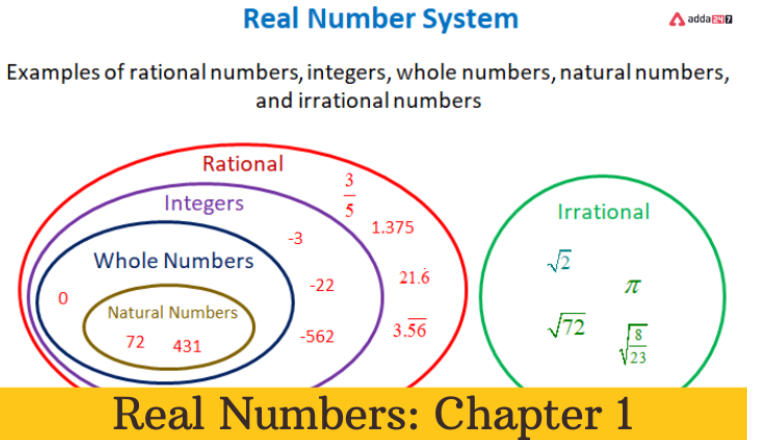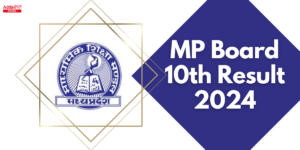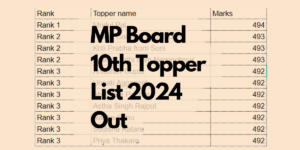Table of Contents
Real Numbers Class 10 Notes
R= Real Numbers
Real numbers include both irrational and rational numbers.
I= Integers
Integers are all numbers starting with (…-3, -2, -1, 0, 1, 2, 3…).
Q= Rational Numbers
Rational numbers are real numbers with the pattern p/q, q 0, and p, q I.
- Rational expressions can represent all integers, such as 5 = 5/1.
- Decimal expansion of recurring or non-recurring rational numbers.
Q’ = Irrational Numbers
Real numbers cannot be expressed in the form p/q, whose decimal expansions are non-terminating and non-recurring.
- Roots of primes like √2, √3, √5 etc., are irrational.
N= Natural Numbers
Natural numbers are those that can be counted. N = {1, 2, 3, …}
W= Whole Numbers
Whole numbers are the collective term for zero and all natural numbers. {0, 1, 2, 3,…}
Even Numbers
Even numbers are natural numbers with the form 2n. (2, 4, 6, …}
Odd Numbers
Odd numbers are natural numbers with the form 2n – 1; examples are 1, 3, 5, etc.
- Why can’t the form be expressed as 2n+1?
Remember!
*Natural numbers are exclusively whole numbers.
*Every Whole Number is an integer.
*Rational Numbers are the same as Integers.
*All Rational Numbers are Real Numbers.
Prime Numbers
Prime numbers are all natural numbers bigger than one that can be divided by 1 and the number itself. Examples of prime numbers are 2, 3, 5, 7, and 11.
- Since it only has one factor, 1, it is not a prime number.
Composite Numbers
Composite numbers are any natural numbers that may be divided by one, including the number one itself. Four, six, eight, nine, ten, etc.
- 1 is not a prime number nor a composite number.
Real Numbers Class 10 Notes- Methods
- Euclid’s Division Lemma
There are distinct integers q and r that satisfy the equation a = bq + r, 0 r b when given two positive integers a and b.
Observe this: Every time, “r” is lower than “b.” Each “q” and “r” is distinctive.
- Application Of Lemma
The HCF of two positive numbers is determined using Euclid’s Division Lemma.
Example: How can I find the HCF of 56 and 72?
Steps:-
- Lemma applied to 56 and 72.
- Find “b” and “r” by using a larger number. 72 = 56 × 1 + 16
- Consider 56 as the new dividend and 16 as the new divisor since 16 s not equal to 0. 56 = 16 × 3 + 8
- Once more, if 8 is not equal to 0, apply 16 as the new dividend and 8 as the new divisor. 16 = 8 × 2 + 0
Ace your class 10th board exams with Adda247 live classes for class 10th preparation.
The remainder being zero, (8) is HCF’s divisor
Euclid’s Division Lemma can be extended to all integers except zero, i.e., b 0. This is true even if it is only stated for positive integers.
III. Constructing A Factor Tree
Steps for building a factor tree:
- Put the amount in the form of a prime number plus a composite number.
Example: 48 factorise
- Continue until all primes have been achieved.
∴ Prime factorization of 48 = 24 x 3
- Fundamental Theorem Of Arithmetic
With the exception of the sequence in which they appear, every composite number can be written as a product of primes, and this expression is singular.
Applications:
- In order to find the HCF and LCM of two or more positive integers.
- Demonstrating the irrationality of numbers
- To identify the type of rational number’s decimal expansion.


 MP Board 10th Result 2024 Out, Get Direc...
MP Board 10th Result 2024 Out, Get Direc...
 MP Board 10th Topper List 2024 Out, Anus...
MP Board 10th Topper List 2024 Out, Anus...
 MP Board 12th Result 2024 Out, Check Dir...
MP Board 12th Result 2024 Out, Check Dir...














